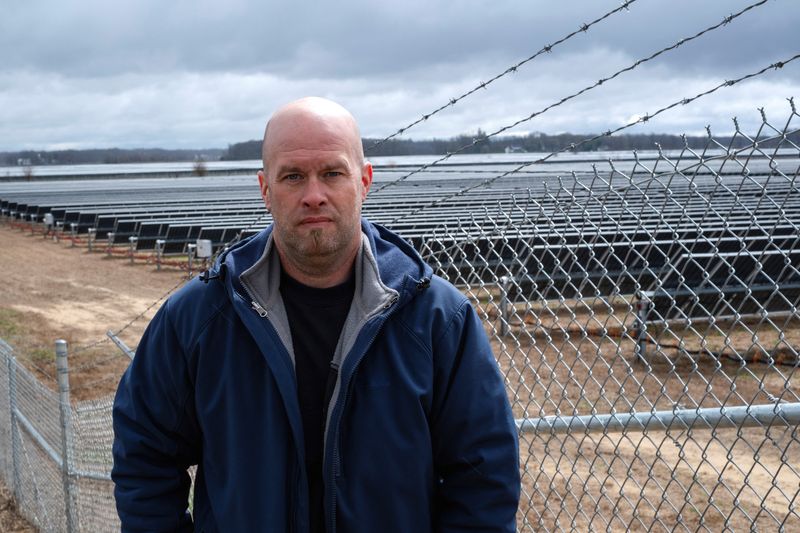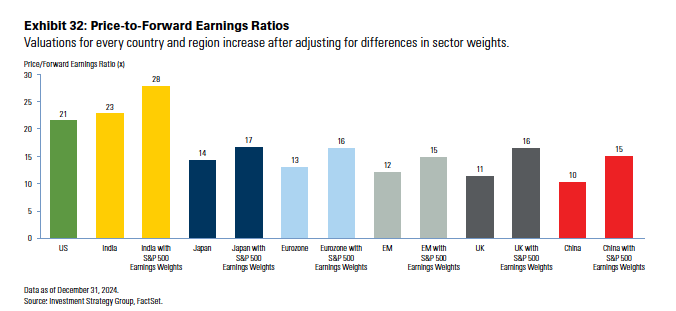As solar capacity increases, some of America’s most productive farmland is at risk. By Reuters


PJ Huffstutter and Christopher Walljasper
JASPER COUNTY, Ind. (Reuters) – Dave Duttlinger’s first thought when he saw the dense bands of tan dust blanketing the sky above his Indiana farm was: I warned them this would happen.
The approximately 445-acre farm near Whitfield, Indiana, is covered with solar panels and associated machinery. Duttlinger leased the land in April 2019 to Dunns Bridge Solar LLC, one of the largest solar developments in the Midwest.
On a breezy spring afternoon in 2022, Duttlinger said his phone rang with questions from disgruntled neighbors. Why is dirt from your farm in my truck? Inside my house? Who do I call to clean it?
According to Duttlinger’s solar lease agreement reviewed by Reuters, Dunns Bridge will use commercially reasonable efforts “to minimize damage to and disturbance to agricultural crops and agricultural lands due to construction activities” outside the project site and “will not remove topsoil.” “It won’t happen,” he said. The property itself. Nonetheless, subcontractors graded Duttlinger’s field to help build the road and install poles and panels, he said. Despite his warning that doing so could make the land more vulnerable to erosion.
Duttlinger said crews reshaped the landscape, laying down fine sand over large areas of rich topsoil. When Reuters visited his farm last year and this spring, much of the ground beneath the panels was covered with tan sand where no plants grew.
“I will never be able to grow anything in that field again,” said the farmer. About a third of his family’s 1,200-acre farm, where they grow corn, soybeans and alfalfa for their livestock, is leased.
remove ads
.
The Dunns Bridge Solar project is a subsidiary of NextEra Energy (NYSE:) Resources LLC, the world’s largest generator of renewable energy from wind and solar. When Duttlinger approached NextEra about the damage to his land, the company said it would review any necessary remediation work upon the end of the contract in 2073 under the terms of the contract.
NextEra declined to comment on the matter or its future commitments to Duttlinger, which Reuters could not independently verify. Project developer Orion Renewable Energy Group (NASDAQ:) LLC referred questions to NextEra.
The solar industry is expanding into the American Midwest, driven by low land rents, access to electric transmission, and ample federal and state incentives. The area also has extensive fields for solar power generation.
The renewable energy boom risks damaging America’s most fertile soil in key agricultural states like Indiana, according to a Reuters analysis of federal, state and local data. hundreds of pages of court records; Includes interviews with more than 100 energy and soil scientists, agricultural economists, farmers and farmland owners, and local, state, and federal lawmakers.
Some of Duttlinger’s farms, including parts now covered with solar panels, are on land classified by the U.S. Department of Agriculture (USDA) as most productive for growing crops, according to a Reuters analysis.
For landowners like Duttlinger, the promise of profit is attractive. Solar leases in Indiana and surrounding states can provide $900 to $1,500 per acre per year in land rent, with annual rates increasing, according to a Reuters review of solar leases and interviews with four solar project developers. By comparison, farmland rents in Indiana, Illinois and Iowa, the top corn and soybean producing states, averaged about $251 per acre in 2023, according to USDA data.
remove ads
.
Farmland Partners Inc, a publicly traded farmland real estate investment trust (REIT), has leased about 9,000 acres nationwide to solar companies. Chairman Paul Pittman said most of those areas were very productive.
“Do I think this is the best use of the land? Probably not. But if we don’t pursue this, our investors are going to kill us,” he said.
Some renewable energy developers have said not all leases will be solar projects. Some are designing their sites to allow crops to be grown between the panels, while others, such as Doral Renewables LLC, say they are using livestock to graze around the panels as part of their land management. Developers also argue that solar energy is key to powering future electric vehicles in the Midwest, where more than a third of the U.S. corn harvest is used to produce ethanol.
Some agricultural economists and agronomists counter that taking even a small amount of prime agricultural land out of production for solar power and damaging precious topsoil affects America’s future crop potential.
Even common solar farm construction practices, including clearing and grading large tracts of land, can lead to severe erosion and large sediment runoff without proper remediation, according to the US Environmental Protection Agency and the Department of Justice.
Solar development comes amidst intensifying competition for land. According to USDA data, farmland will have 76.2 million fewer acres in 2023, or nearly 8 percent, than in 1997 as farmland is converted to residential, commercial and industrial uses.
In response to the Reuters findings, the USDA said urban sprawl and development are currently contributing more to farmland loss than solar power, citing Department of Energy reports and agency-funded studies.
remove ads
.
Built on prime agricultural land
No one knows how much agricultural land across the country is currently under solar panels or leased for future development. Land transactions are usually private transactions. Scientists from the United States Geological Survey and the U.S. Department of Energy’s Lawrence Berkeley National Laboratory have been compiling a database of existing solar facilities across the country. Although the project is incomplete and ongoing, Reuters found that about 0.02% of all agricultural land in the continental United States intersects in some way with confirmed large-scale ground-based solar panel sites as of 2021.
The total power capacity of solar power tracked in the data set represents more than 60 gigawatts of power capacity. Over the next two years, solar capacity nearly tripled, according to a December 2023 report from the Solar Energy Industries Association (SEIA) and Wood Mackenzie.
To better understand future land use patterns, Reuters analyzed federal government data to identify agricultural lands that the USDA classifies as critical, unique, or regionally or statewide. Reuters also reviewed more than 2,000 pages of solar-related documents filed with local county recorder’s offices in a small sample of four Midwestern counties, including Pulaski, Stark and Jasper counties in Indiana and Columbia County in Wisconsin.
The county, which represents a land area slightly larger than the state of Delaware, is home to some of the largest projects being developed or built in the country. Although the sample is not necessarily representative of the entire United States, it gives an idea of the potential impact of solar projects in counties with many farms.
remove ads
.
Reuters found that the percentage of these counties’ most productive agricultural land secured by solar and energy companies as of the end of 2022 was: Pulaski 12%, Starke 9%, Jasper 4%, Columbia 5%.
Jerry Hatfield, former director of the USDA’s National Agricultural and Environmental Research Institute, said the Reuters findings in the four counties were “concerning.”
“It’s not the number of acres converted to solar power,” he said. “It’s the quality of the land that comes from production, and what that means for the local economy, the national economy and the country’s ability to produce future crops.”
More than a dozen agricultural economists, renewable energy researchers and other experts consulted by Reuters said the approach to measuring the impact of solar energy was fair. The carrier also shared its findings with six solar developers and energy companies that work in the county. Three people said Reuters’ sample size was too small and its findings too broad to fairly depict industry locations and construction practices.
To meet the Biden administration’s decarbonization goals by 2050, the United States will need up to 1,570 gigawatts of electrical energy capacity from solar.
The land needed for ground-based solar power to achieve this goal will vary by state, but will not exceed 5% of the land area of any state except the smallest state, Rhode Island, where it can reach 6.5%. It is expected not to happen. to 2050, according to the Department of Energy’s Solar Futures Study published in 2021.
Researchers at the American Farmland (NYSE:) Trust, a nonprofit farmland conservation organization that advocates for what’s called Smart Solar, predicted last year that 83% of new solar energy development in the U.S. would take place on farms and ranches absent current government policy. It has changed. Nearly half of that would be on land best suited to producing food, fiber and other crops, they warned.
remove ads
.
fuel debate
Five renewable developers and solar energy companies interviewed by Reuters countered that the industry’s agricultural land use is too small to affect domestic food production overall and must be balanced with the need to decarbonize U.S. energy markets in the face of climate change. .
Doral Renewables, which developed the $1.5 billion Mammoth Solar project in Pulaski and Starke counties, does not consider corn or soybean yields in its site selection decisions.
Instead, the company looks at the land’s topography, zoning and proximity to the power grid or substation and tries to avoid wooded areas, ditches and environmentally sensitive areas, said Nick Cohen, Doral’s president and CEO.
Moving acres of corn for solar? “I don’t think this replaces something that’s essential to our society,” Cohen said. Solar power “can make farmland more productive from an economic standpoint,” he added.
Norm Welker, an Indiana farmer, said he got better terms leasing 60% of his farmland to Mammoth than growing corn, and prices this year fell to a three-year low.
“We have a lot of corn, and it’s cheaper than it costs to produce it, and if you lease land to grow corn right now, you’re losing money,” Welker said. “The economic situation is very good this way.”



